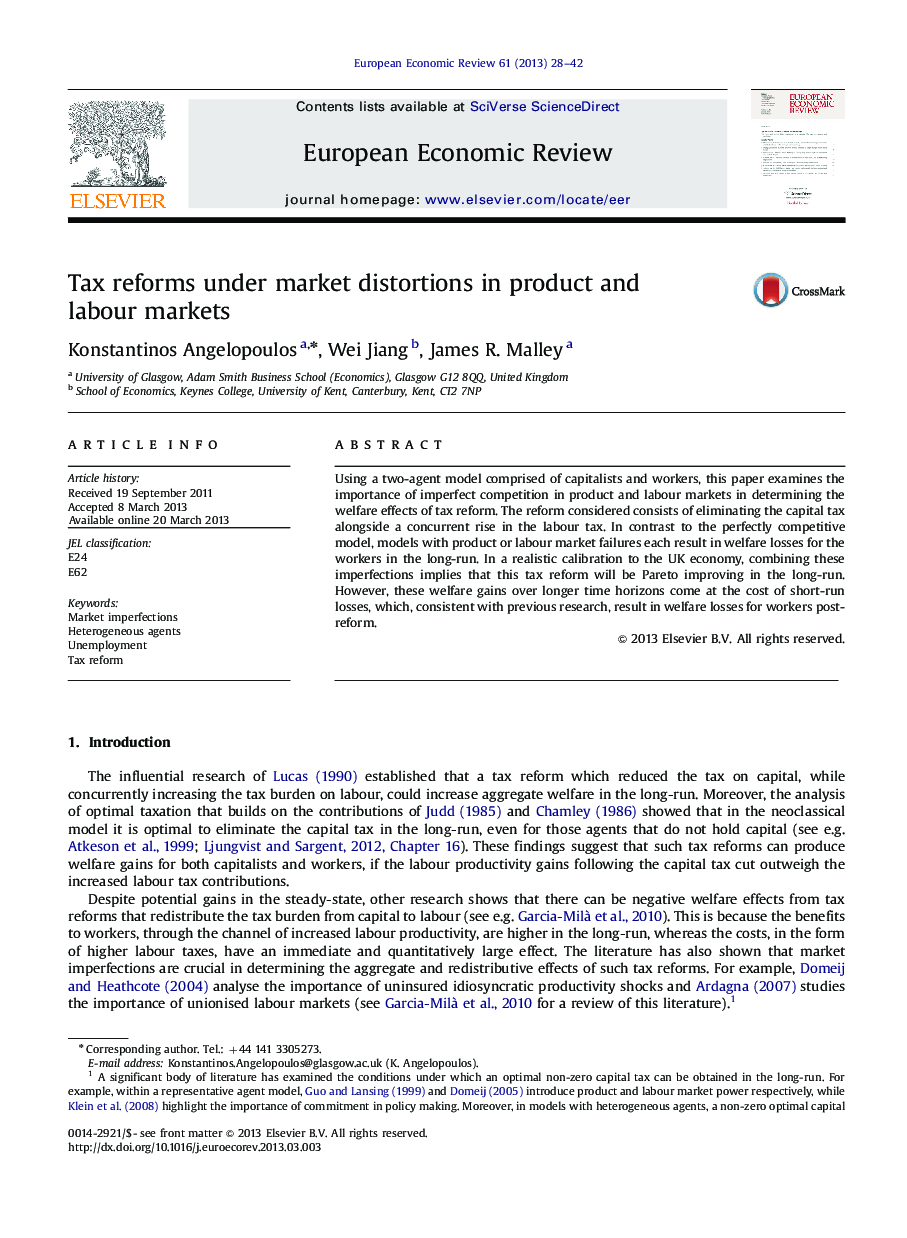| Article ID | Journal | Published Year | Pages | File Type |
|---|---|---|---|---|
| 5066954 | European Economic Review | 2013 | 15 Pages |
Author-Highlightsâ¢The paper examines the distributional effects of capital tax cuts.â¢Agent heterogeneity arises from differences in capital asset holdings.â¢We account for imperfect competition in product and labour markets.â¢These failures imply losses from the reform, for at least a part of the population.â¢When both failures occur, a capital tax cut is Pareto improving in the long run.
Using a two-agent model comprised of capitalists and workers, this paper examines the importance of imperfect competition in product and labour markets in determining the welfare effects of tax reform. The reform considered consists of eliminating the capital tax alongside a concurrent rise in the labour tax. In contrast to the perfectly competitive model, models with product or labour market failures each result in welfare losses for the workers in the long-run. In a realistic calibration to the UK economy, combining these imperfections implies that this tax reform will be Pareto improving in the long-run. However, these welfare gains over longer time horizons come at the cost of short-run losses, which, consistent with previous research, result in welfare losses for workers post-reform.
